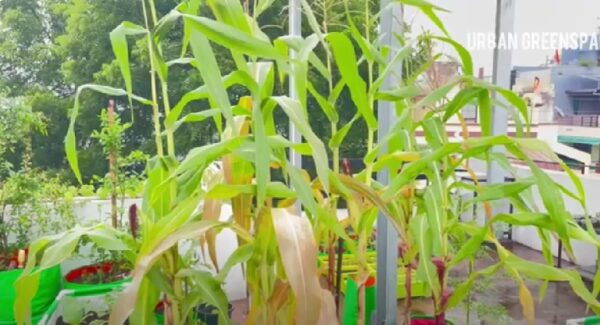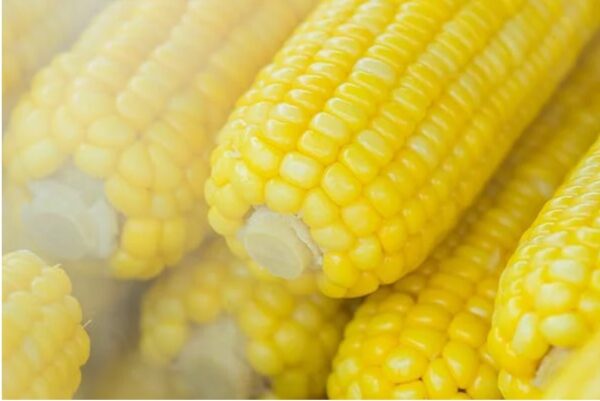Corn (Bada Irigu) Cultivation in Sri Lanka-By Kalani –eLanka

Corn, known as “Bada Irigu” in Sri Lanka, is a versatile and nutritious cereal crop that plays a significant role in the country’s agriculture and food security. Corn cultivation has gained popularity among Sri Lankan farmers due to its adaptability to various agro-climatic conditions and its wide range of uses in both human and animal diets. This article provides a comprehensive guide to corn cultivation in Sri Lanka, covering everything from land preparation to harvesting and post-harvest management.
- Land Preparation
Before planting corn, it is crucial to prepare the land properly. Here are the key steps in land preparation:
a. Choose the right location: Select a well-drained field with good sunlight exposure for optimal growth.
b. Soil testing: Conduct a soil test to determine the soil’s nutrient content. Corn thrives in loamy or sandy loam soils with a pH level between 6.0 and 6.8.
c. Plowing and tilling: Plow the field to a depth of 20-25 cm to break up compacted soil. Follow this with tilling to create a fine seedbed.
d. Soil amendment: Based on the soil test results, apply the necessary nutrients and organic matter to improve soil fertility.
- Seed Selection and Planting
Choosing the right corn variety is crucial for successful cultivation. Some popular corn varieties grown in Sri Lanka include Hybrid A6604, PAC 7803, and Lankamil 1. Here’s how to plant corn:
a. Seed treatment: Treat the corn seeds with fungicides and insecticides to protect against diseases and pests.
b. Planting method: Corn can be sown directly in rows or through broadcasting. Row planting is recommended for better spacing and easier weed control.
c. Planting depth and spacing: Plant the seeds at a depth of 3-5 cm and space them 20-25 cm apart within rows. Maintain rows at least 60-75 cm apart.
- Irrigation
Corn requires regular and consistent moisture throughout its growth cycle. Depending on the rainfall pattern in your region, consider using drip or furrow irrigation systems to ensure adequate water supply.
- Fertilization
Corn is a nutrient-demanding crop. Apply fertilizers based on soil test recommendations and the specific nutrient requirements of the corn variety you’re cultivating. Nitrogen, phosphorus, and potassium are the primary nutrients needed.
Title: Corn (Bada Irigu) Cultivation in Sri Lanka: A Comprehensive Guide
Introduction
Corn, known as “Bada Irigu” in Sri Lanka, is a versatile and nutritious cereal crop that plays a significant role in the country’s agriculture and food security. Corn cultivation has gained popularity among Sri Lankan farmers due to its adaptability to various agro-climatic conditions and its wide range of uses in both human and animal diets. This article provides a comprehensive guide to corn cultivation in Sri Lanka, covering everything from land preparation to harvesting and post-harvest management.
- Land Preparation
Before planting corn, it is crucial to prepare the land properly. Here are the key steps in land preparation:
a. Choose the right location: Select a well-drained field with good sunlight exposure for optimal growth.
b. Soil testing: Conduct a soil test to determine the soil’s nutrient content. Corn thrives in loamy or sandy loam soils with a pH level between 6.0 and 6.8.
c. Plowing and tilling: Plow the field to a depth of 20-25 cm to break up compacted soil. Follow this with tilling to create a fine seedbed.
d. Soil amendment: Based on the soil test results, apply the necessary nutrients and organic matter to improve soil fertility.
- Seed Selection and Planting
Choosing the right corn variety is crucial for successful cultivation. Some popular corn varieties grown in Sri Lanka include Hybrid A6604, PAC 7803, and Lankamil 1. Here’s how to plant corn:
a. Seed treatment: Treat the corn seeds with fungicides and insecticides to protect against diseases and pests.
b. Planting method: Corn can be sown directly in rows or through broadcasting. Row planting is recommended for better spacing and easier weed control.
c. Planting depth and spacing: Plant the seeds at a depth of 3-5 cm and space them 20-25 cm apart within rows. Maintain rows at least 60-75 cm apart.
- Irrigation
Corn requires regular and consistent moisture throughout its growth cycle. Depending on the rainfall pattern in your region, consider using drip or furrow irrigation systems to ensure adequate water supply.
- Fertilization
Corn is a nutrient-demanding crop. Apply fertilizers based on soil test recommendations and the specific nutrient requirements of the corn variety you’re cultivating. Nitrogen, phosphorus, and potassium are the primary nutrients needed.
- Weed and Pest Management
Weed control is essential during the early stages of corn growth. Use pre-emergence and post-emergence herbicides as needed. Monitor the crop regularly for signs of pests and diseases, and apply appropriate pesticides when necessary.
- Harvesting
Corn is typically ready for harvest within 90-120 days, depending on the variety and growing conditions. Harvest when the kernels are fully mature and in the milk stage. This is determined by squeezing a kernel; if a milky substance is released, it’s time to harvest.
- Post-Harvest Management
After harvesting, dry the corn to reduce its moisture content to around 12-14% to prevent mold growth. Store the dried corn in proper storage facilities to protect it from moisture and pests.

Corn cultivation, known as “Bada Irigu” in Sri Lanka, holds great potential for both small-scale and large-scale farmers. By following these guidelines on land preparation, seed selection, planting, irrigation, fertilization, weed and pest management, harvesting, and post-harvest management, farmers can increase their corn yields and contribute to food security in Sri Lanka. With its versatility and nutritional value, corn remains a valuable crop for the nation’s agricultural sector.







